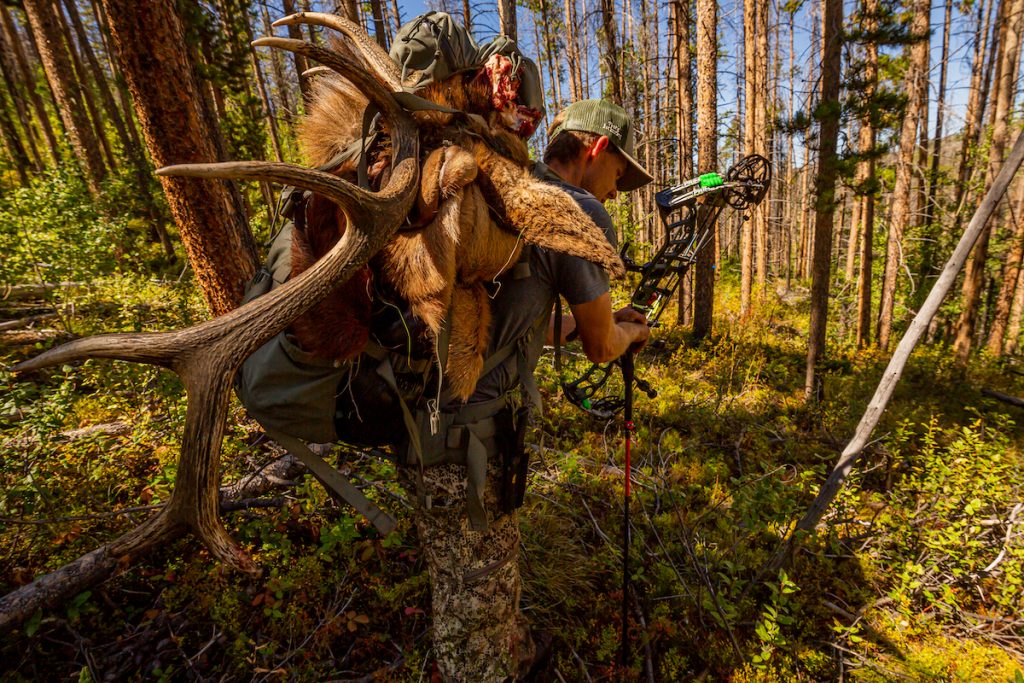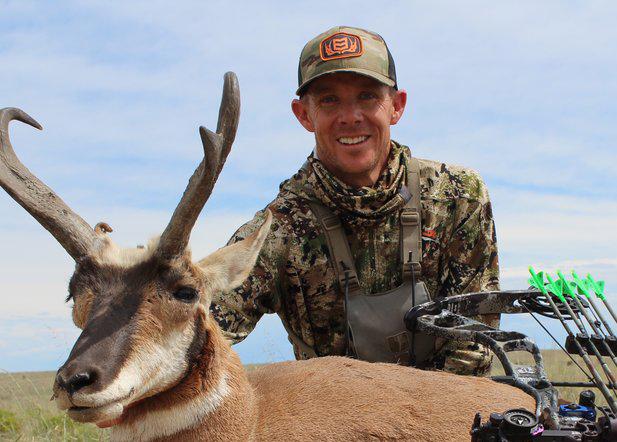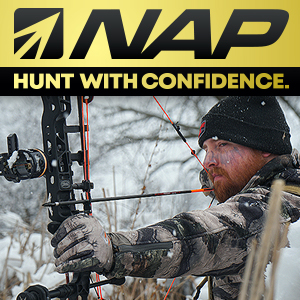I love hands-on recon, trail cam intel, and visiting with others who’ve hunted locales on my to-hunt radar. Scouting and talking with fellow hunters provide a sense of confirmation. However, if you want a true adventure, there is fantastic joy awaiting the hunter who steps into new territory and knows little about it.
by Jace Bauserman
It was November of 2021, and I was on a heater. I wasn’t yelling “Black Jack” at Caesars Palace, but I was ending a fantastic year in the woods.
My mind drifted as I sat high in a Nebraska treestand, waiting on one of two shooters I knew were in the area. I’d arrowed a Pope & Young bighorn in August with my Hoyt. I killed the ram on the third afternoon of my hunt but had been scouting on the mountain for two weeks before the season opened. In September, I took a 330-inch free-range Texas bull elk and shot another solid bull in Colorado later in the month.
My Texas hunt was with an outfitter; I was the guest of Federal Ammunition, and it was epic. My Colorado hunt happened when some buddies stumbled across a herd of plains elk. With only a few days remaining in September, I pooled my trail cam data and studied the comings and goings of pronghorn visiting some prairie water sources. With two days left in the month, I climbed in my Primos Double Bull and shot a solid buck.
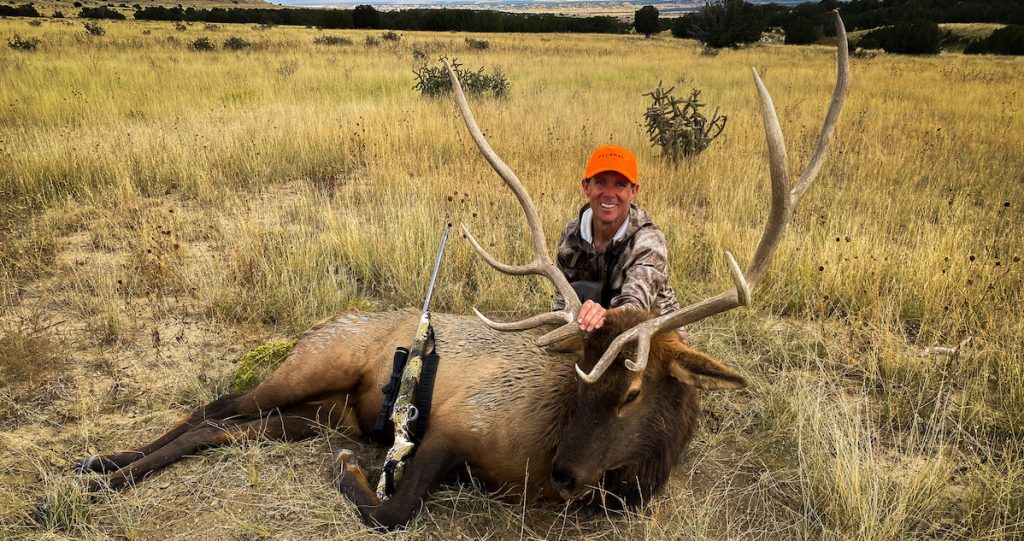
As I mentioned, I was on a heater. During the latter part of October, I arrowed a 5 1/2-year-old Colorado whitetail with whom I had years of history. I’d put in a pond and enhanced bedding in his home range, and the brute made an appearance with light waning on the evening of October 24.
Please don’t fret; this article isn’t about me reliving past success. As I sat in that Nebraska treestand, I realized how much scouting, prep work before the season, outfitters, friends, etc., had played in my success in 2021. Don’t get me wrong, all the hunts were exceptional, and aside from the outfitted elk hunt, I earned every inch of horn. However, some of my most memorable hunts over the years for elk, mule deer, pronghorn, whitetail, turkey, etc., have come when I dove into a new area with nothing more than a few pins dropped on my HuntStand app.
Spoiled!
We’ve gotten spoiled as hunters. Properly placed trail cameras keep an eye on the woods 24/7/365. Now, where legal, we have cellular scouters that send right-now-captured images to our smartphones. We build hit lists, give animals names, and the list continues.
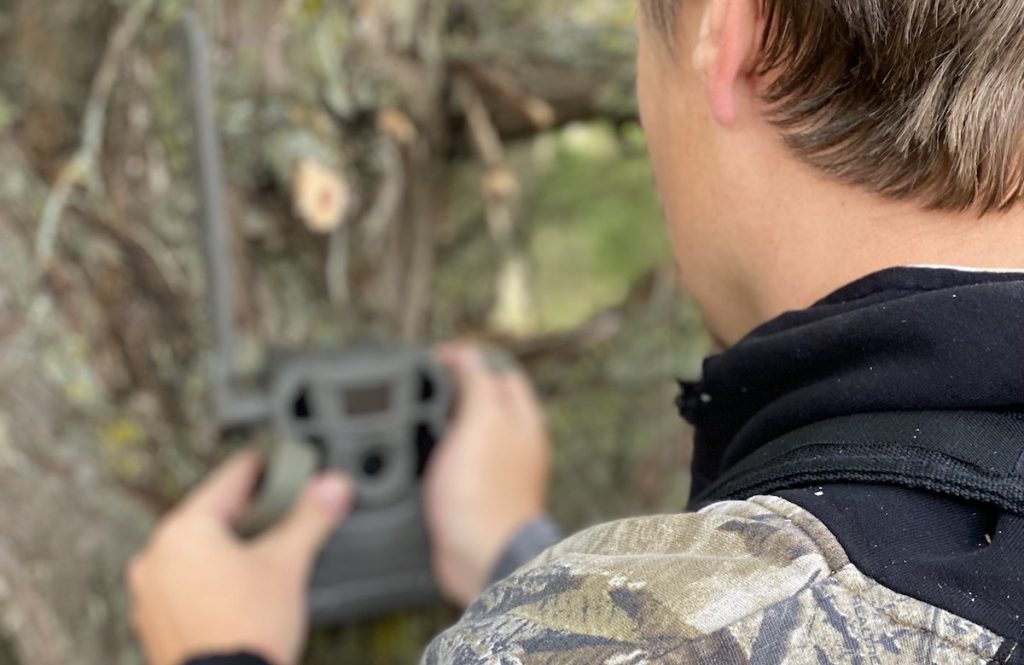
Western goers often make multiple scouting trips, some, like me, even go as far as hanging trail cameras over wallows and high-traffic areas where multiple trails intersect.
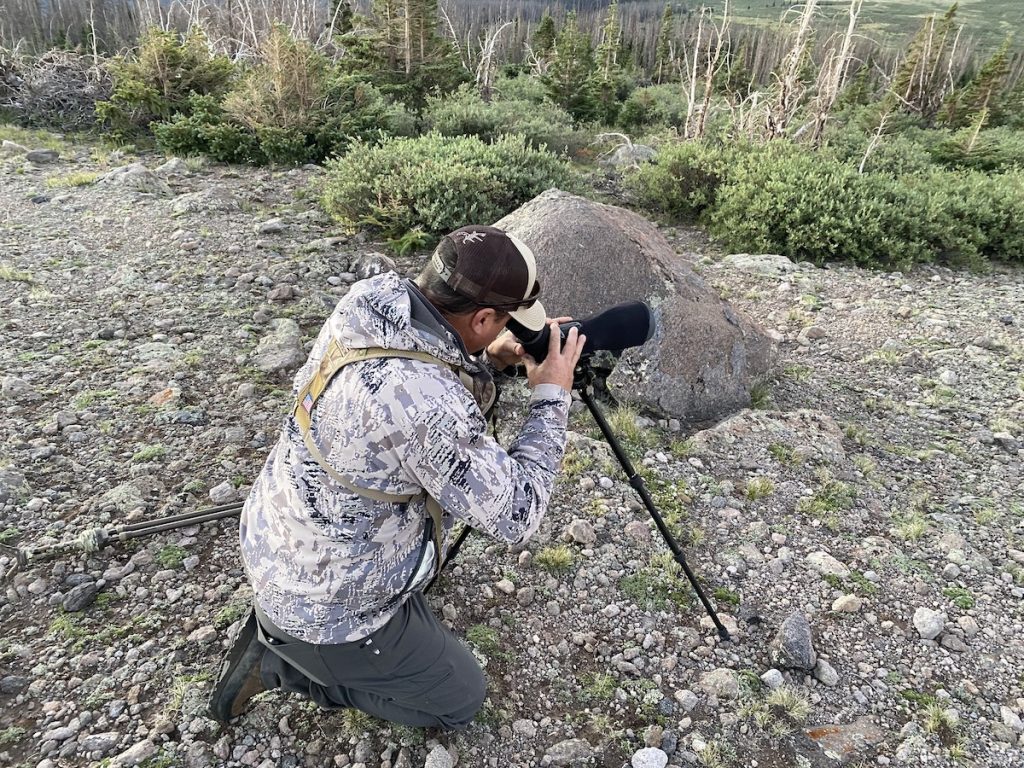
We visit with anyone who has intel and is willing to share it about a particular area, and we go the extra mile to dot all our Is and cross all our Ts.
Again, there is nothing wrong with this approach. I do it all the time. What I want to point out is there’s something magical and raw about arriving at a trailhead, parking lot, Walk-In Access Area, etc., without knowing what size of animals are there, or if there are animals at all. Something is amazing about not knowing if the treestand you marked on your digital mapping app will be a “hot spot” — if that lone saddle between two mountain peaks will be a killer elk area. This type of hunting is what will make you a better hunter.
I’m not saying to go unprepared — quite the opposite. In many ways, you need to be more prepared when venturing into the unknown. If this type of adventure sounds exciting (trust me, it is), heed the to-come advice.
Maps & More Maps
Be sure to research and download your favorite hunting app. My go-to is HuntStand. The app is excellent, and though tailored more for the whitetail hunter, features like waypoint marking, updated monthly satellite imagery, and public/private boundaries work well for the western goer.
Before dropping pins and e-scouting your area, order a paper map of where you’ll be hunting. My go-to is a waterproof topo, and while this step isn’t an absolute must for the whitetail crowd, I still do it.
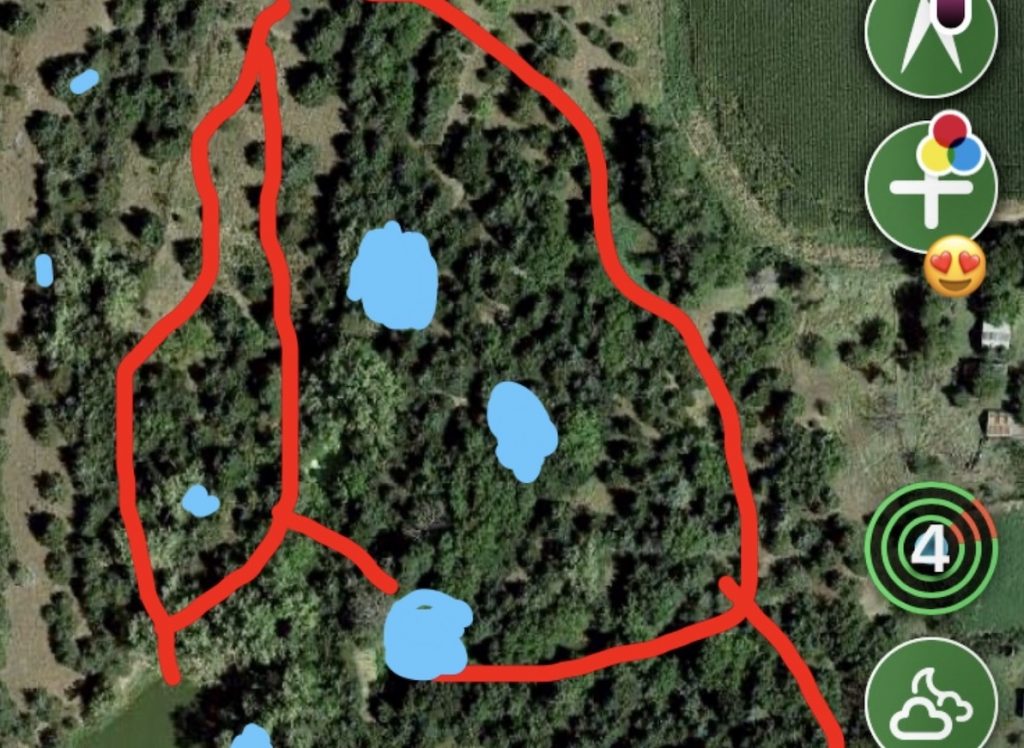
With your paper map laid out in a well-lit area and your smartphone powered up, start scouting. No matter what critter I’m hunting, my first step is locating likely water sources. Next, I pin likely food sources. Of course, these food sources vary significantly by region.
I am looking for cut grain fields if I’m hunting Kansas whitetails on open-to-anyone dirt. In the elk mountains, I’m looking for isolated meadows surrounded by dark timber with water nearby. If high-country mule deer are the target, it’s alpine basins and mountain slopes dotted with high-in-protein shrubs.
Next, I pin at least five glassing points, especially when hunting out West. I like to locate high points that will provide me with maximum terrain visibility, allowing me to rest my legs while my optics wander. If I’m chasing whitetails, I get as specific as dropping pins on the trees in which I plan to hang a treestand in.
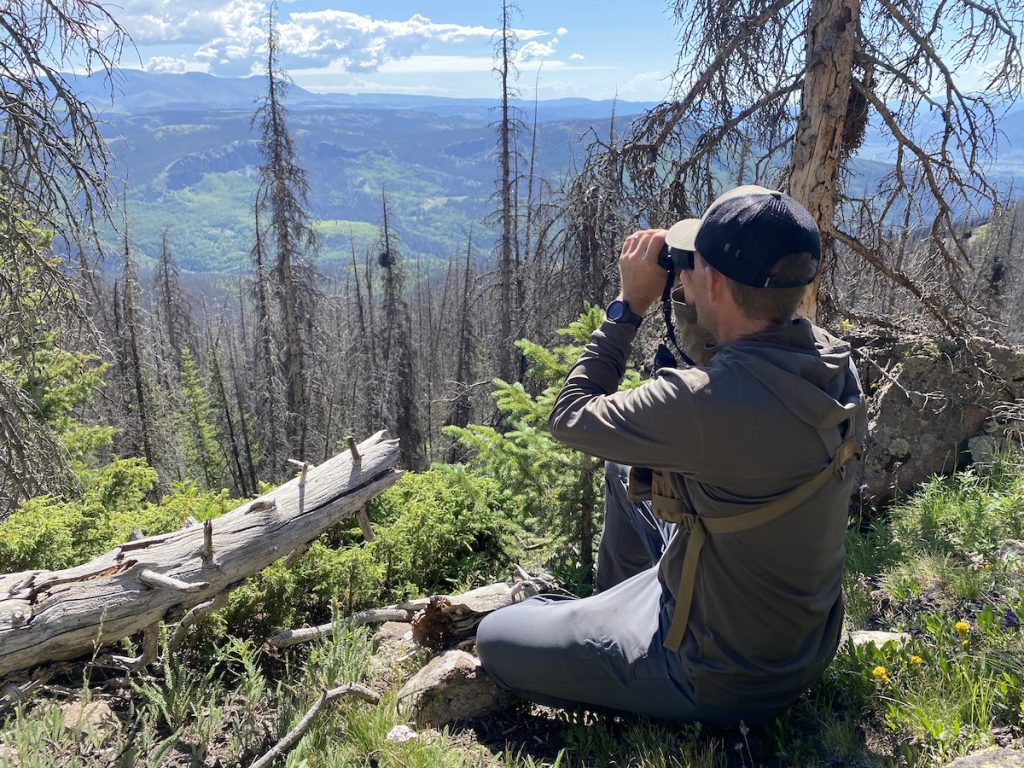
Also, be sure to map out likely camping spots if you plan to sleep in the woods. You will also want to mark areas where you can access and filter water. Trailheads, parking areas, and places where the trail into a chosen spot splits are essential marking points too.
The paper map is there as a guide, and I use a magic marker and add all of my waypoints to my paper map. Lastly, I download any of the digital maps I created offline. This feature allows me to name, save, and store my maps. When on the hunt and cellular service is lost, I still have full access to my offline map cache. Of course, my paper map makes every hunt trip with me.
Have A Plan A, B, C, and D
You won’t be making a hands-on scouting trip, hanging cameras, or getting intel from someone that knows the area. For this reason, you need to give yourself options. Plan A is option 1 — your best option — what you hope happens. On these types of hunts, Plan A rarely works out. Chances are good that someone else has the same Plan A.
Plans B, C, and D need to be different from Plan A and each other. That means different access points, camping spots, glassing locales, everything. You will spend a lot of time studying maps. Sometimes, it may mean packing up base camp and driving several miles to an entirely new area still in the same region but an hour or more drive away.
I detail each plan this way:
- Parking
- Base camp
- Access trail
- Water sources
- Food sources
- Bedding areas
- Spike camps (if needed)
- Glassing points
I have more bullet points, but these are the basics and the most important ones. You can adjust on the fly if you have four options mapped out and ready before you go.
Arrival
You will arrive at your hunt area full of nerves and anticipation. I cherish these moments. There is something wild and raw about venturing into the unknown.
If you’re on a whitetail mission, you first need to get your camp squared away. Anymore, I haul my camper, but in my younger years, I set up a tent. Then, during midday, head in and check your treestand spots and any areas you thought might be good for a ground blind.
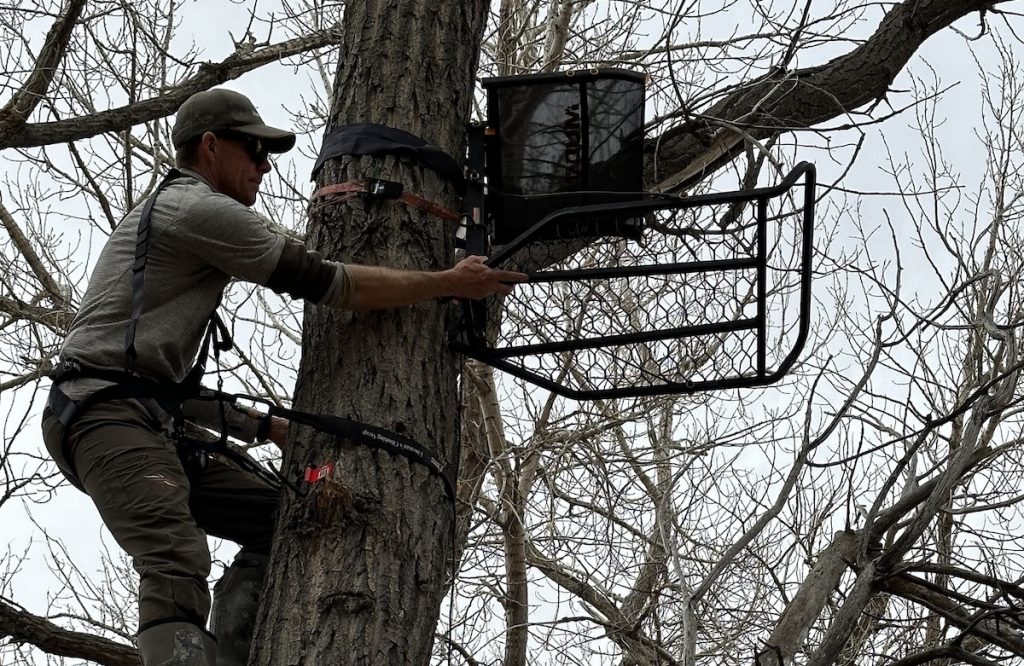
As you move through the woods, please don’t do it blindly. By this, I mean don’t move from waypoint to waypoint too quickly. Chances are reasonable, you’ll find some right-now whitetail movement if you scout as you hang stands and set ground blinds. Often, I find one or more of the trees I marked ahead of time are money. However, often, I stumble upon a hot spot and hang a stand in an area I hadn’t even looked at during my e-scouting.
If you’re on a western mission, set up your base camp, strap on your pack, and start humping it to your first planned spike camp spot. Depending on the length of the walk, you may arrive in time to set your bivy sack or one- or two-person tent and get some shuteye. Or, you may arrive in time to access that first glassing point, which should be close to your chosen campsite.
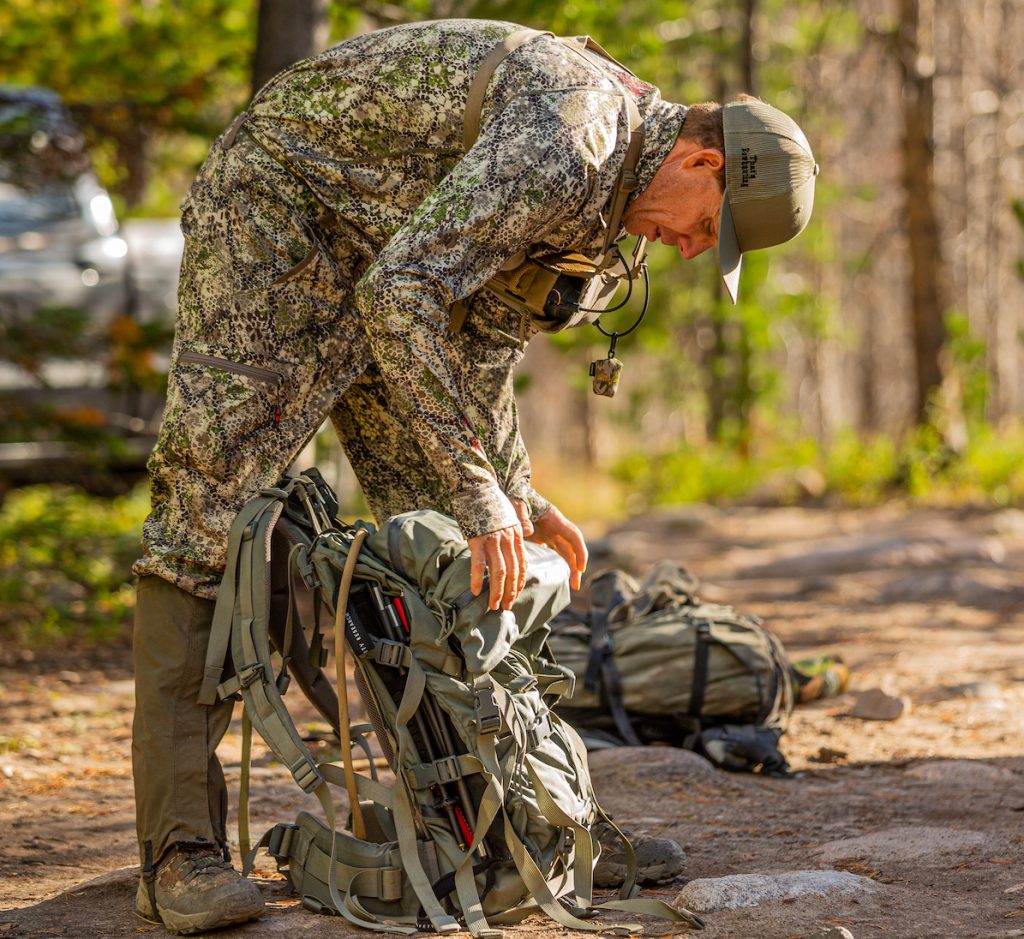
No matter what game species you’re after, you simply get after it now. You learn and adjust on the fly and have an adventure that I promise will be one your hunting mind will call on often in the coming years. You will learn something about yourself, whether you punch a tag or don’t, and you’ll come back a better person. Enjoy!
